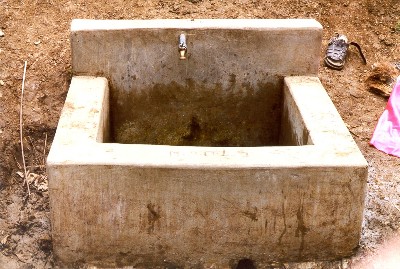The Case for Clean Water
Dale Easley
20 Feb 2003
Recently I had a bout with intestinal flu that left me feeling wrung out. As I trudged back and forth from the bathroom, I tried to look at the bright side: I had a flush toilet, running water to wash my hands, and a warm bed to rest in. My wife brought me refrigerated Pepto-Bismol to ease my discomfort. If things got really bad, I could call the doctor. Compared to many of the people in Haiti and other developing countries, I have it pretty good.
 Buckets used for carrying water uphill to homes. |
Most of the childhood cases of diarrhea come from drinking contaminated water. I'm not talking about pesticides or some exotic chemical---I'm talking about feces in the water. Scoop a bucket of water out of a stream, open well, or spring, and chances are there are things living in it that can kill a child, if not an adult. But many people---over a billion people worldwide---don't have access to clean water. Providing clean water is fairly straightforward---we have the technology and it doesn't cost much.
 Spring capture box. |
 Faucet that delivers clear water from the spring capture box. |
Haiti is an extreme example of poverty, but there are other parts of the world as bad off. For a little bit of money, we could make a big difference. Ultimately, I'd love to see Haiti move to self-sufficiency, beyond the need for charity. I hope Ananda and Tess will support themselves someday, too. That won't happen simply saying it ought to. I've got to invest in my kids' lives for years to come. Likewise, I believe the international community and people of good will need to invest in the lives of the poor, and providing clean water is a way for the investment to show immediate results.